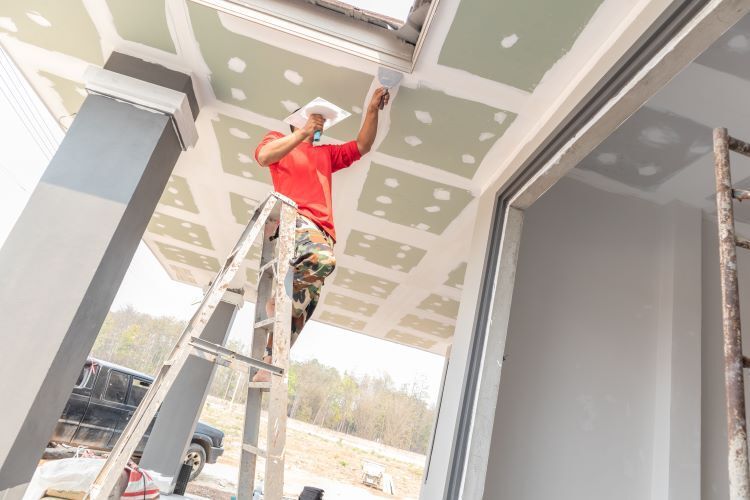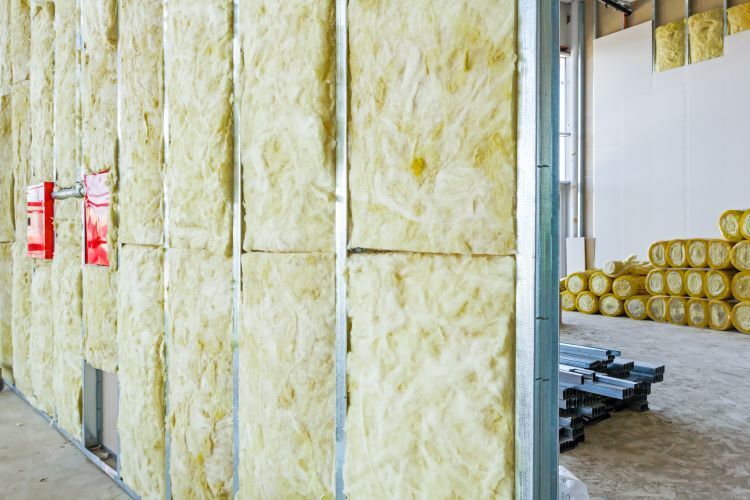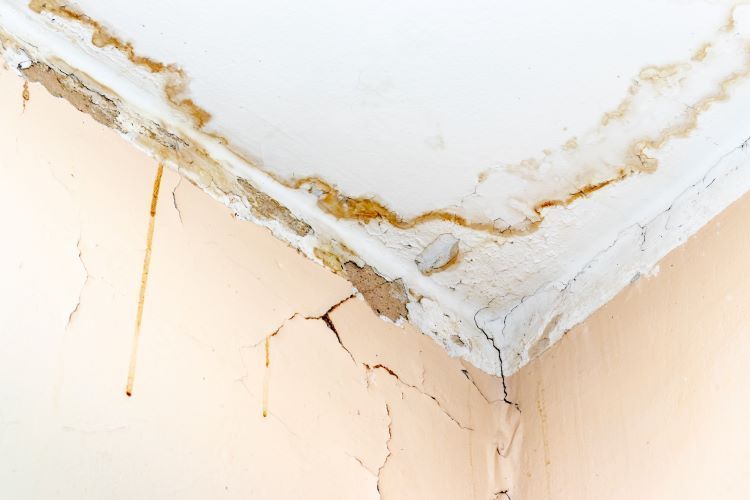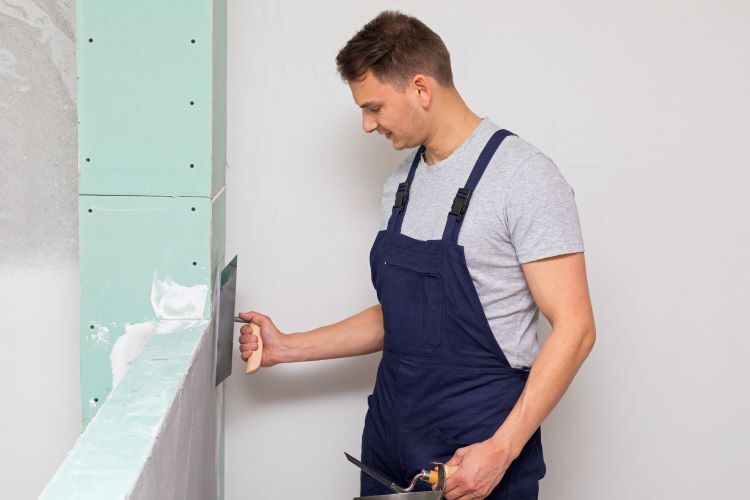Professional Tips for Installing Drywall in High-Moisture Areas

When it comes to installing drywall in high-moisture areas, such as bathrooms, basements, kitchens, and even garages, choosing the right materials and following best practices can make a significant difference in the longevity of your walls. Moisture-prone spaces demand extra attention to ensure drywall maintains its integrity and resists mold and mildew. Here, we’ll explore some essential tips from professionals on installing drywall in high-moisture environments to help keep your walls safe and resilient.
1. Select the Right Type of Moisture-Resistant Drywall
Using standard drywall in moisture-prone areas is risky. Fortunately, there are specially designed drywall types that withstand damp environments much better than traditional drywall. Here’s a breakdown of the best options:
- Green Board: This is a common moisture-resistant drywall with a green paper covering that helps it resist moisture. However, green board is best suited for areas with occasional moisture, not for direct water exposure.
- Purple Board: Purple board is a step up from green board, offering even more robust mold and moisture resistance. It’s great for bathrooms, kitchens, and other high-humidity areas, providing added durability.
- Cement Board: For maximum moisture resistance, cement board is an excellent choice. Since it’s cement-based, it’s waterproof and highly mold-resistant, making it ideal for areas that see direct water exposure, like behind showers or sinks.
- Fiberglass-Faced Drywall: Unlike traditional drywall, which has a paper-facing, fiberglass-faced drywall is highly resistant to mold and mildew. This is especially useful in basements or areas that experience frequent condensation.
2. Use Mold-Resistant Joint Compounds
Once you’ve chosen the right moisture-resistant drywall, it’s important to select a mold-resistant joint compound for sealing seams. Standard joint compound can absorb moisture, which could lead to mold growth over time. A mold-resistant joint compound is specially formulated to reduce this risk, providing an additional layer of protection in high-moisture areas.
3. Install a Vapor Barrier
In areas where moisture buildup is likely, such as basements or bathrooms, consider installing a vapor barrier behind the drywall. A vapor barrier acts as a protective layer that prevents moisture from reaching the back of the drywall, which can prolong the wall’s lifespan.
- Types of Vapor Barriers: Plastic sheeting is commonly used for vapor barriers, although some moisture-resistant drywall options may also come with integrated barriers.
- Proper Placement: Install the vapor barrier on the warm side of the wall (the side facing the drywall) to effectively trap moisture and prevent it from damaging the drywall.
4. Ensure Adequate Ventilation
Proper ventilation is key to keeping moisture levels low. In bathrooms, kitchens, or laundry rooms, installing an exhaust fan can help quickly remove steam and humidity. Ventilated areas prevent moisture buildup on walls, keeping drywall drier and less prone to mold. For basements or enclosed spaces, using a dehumidifier can also help regulate moisture levels.
5. Seal Edges and Seams Carefully
Carefully sealing edges, seams, and corners is critical in high-moisture areas. Even small gaps can allow moisture to seep in and damage drywall. For best results:
- Fiberglass Tape: Use fiberglass tape instead of traditional paper tape for high-moisture areas, as it’s more resistant to mold.
- Apply Mold-Resistant Caulk: Use a mold-resistant caulk to seal the edges between the drywall and any fixtures (like tubs or sinks) to create a watertight seal.
- Additional Coats: Apply multiple coats of joint compound to ensure a seamless, smooth finish that’s resistant to water penetration.
6. Opt for Mold-Resistant Primer and Paint
Once the drywall is installed, applying mold-resistant primer and paint can further protect it from moisture. Mold-resistant primers create a protective layer that helps keep mold at bay, while high-quality paint designed for humid areas can resist moisture penetration. These finishes are especially valuable in bathrooms, kitchens, and basements.
7. Consider Cement or Tile Backer Boards for Direct Water Exposure
If you’re installing drywall in an area with direct water exposure, like a shower or bath surround, consider using cement or tile backer boards instead of drywall. These materials are designed for wet areas, offering unmatched water resistance. Cement board is an excellent choice as a base for tile in showers and wet rooms, as it won’t absorb water like traditional drywall, ensuring a longer-lasting installation.
8. Perform Regular Maintenance
Even with the best moisture-resistant drywall and installation techniques, it’s important to regularly inspect your walls in high-moisture areas. Look for signs of moisture buildup, such as discoloration, peeling paint, or soft spots.
Addressing any issues early can prevent extensive repairs down the line.
- Check Sealants Regularly: Over time, caulk and sealants can wear out, so reapplying as necessary helps maintain a watertight barrier.
- Monitor Ventilation Systems: Ensure that exhaust fans and dehumidifiers are functioning properly to maintain optimal moisture control.
Benefits of Professional Installation in High-Moisture Areas
While DIY drywall installation is tempting, working with professionals like Windsor Drywallers ensures your project is done correctly, especially in challenging environments. Here’s why professional installation makes a difference:
- Expertise in Material Selection: Professionals can recommend the best type of drywall for your specific needs and environment, from green board to fiberglass-faced options.
- Proper Sealing and Finishing: Correctly sealing seams and applying moisture-resistant finishes is key in humid areas. Professionals ensure a meticulous application, preventing potential leaks or mold issues.
- Efficient Installation: Professional installers work efficiently, reducing downtime and minimizing disruptions to your home. Their experience ensures that the job is completed quickly and accurately.
Conclusion
Drywall in high-moisture areas requires special attention to material choice, sealing techniques, and ventilation to maintain durability and resist mold. By selecting the right type of moisture-resistant drywall, adding a vapor barrier, sealing seams, and using mold-resistant finishes, you can effectively protect your walls from moisture damage. For optimal results, consider professional installation from Windsor Drywallers to ensure a lasting, high-quality finish.
When you’re ready to upgrade or install moisture-resistant drywall in your bathroom, basement, or garage, contact Windsor Drywallers for expert guidance and installation. Our team is equipped to handle all aspects of drywall installation, helping you achieve a safe, durable, and visually appealing finish in any space.
You might also like


